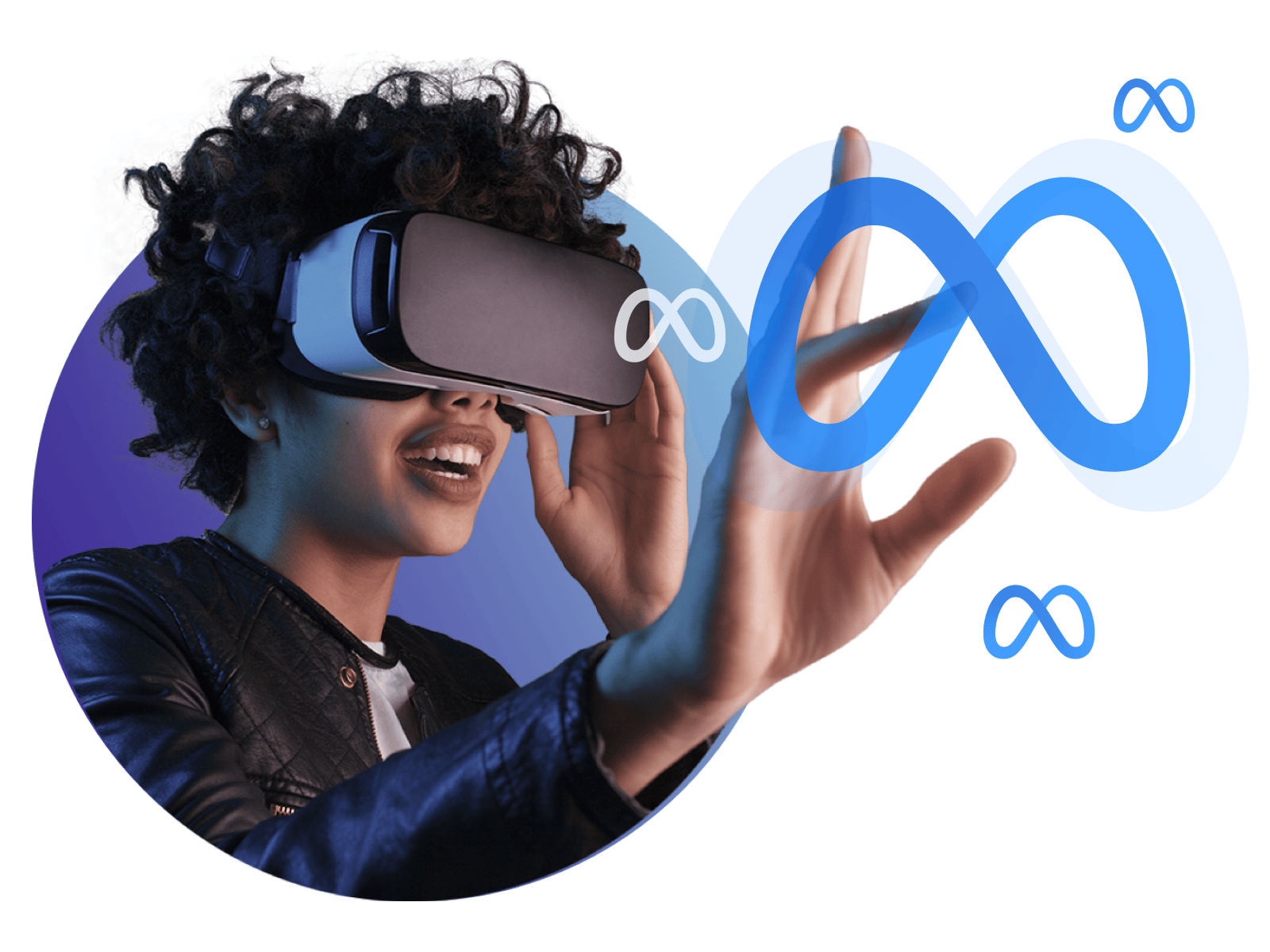Web3 vs Metaverse: Introduction
Some buzzwords crop up every few years in the tech industry, showing a path for innovation and excellent prospects if developed and worked upon properly. Technology is a field that develops continuously, and new trends keep on emerging to overcome earlier shortcomings. Nothing is ever stagnant regarding the tools and concepts used, and people are constantly looking for the next big thing that could bring a significant change in the industry.
Blockchain technology has created quite a stir with its applications used in cryptocurrency, logistics, NFTs, and government matters. It offers a decentralized approach along with increased security and transparency, which makes it an in-demand option by the users since there is no monopoly and any particular person or organization does not have complete control.
Web3 vs Metaverse is the hottest topic if we talk about the 21st century, with students and established developers exploring this field and studying its pros and cons. These also revolve around the concept of complicated and new Blockchain technology and are slowly becoming a popular choice for developing web apps.
This article will explore Web3 vs Metaverse, its impact, advantages, and disadvantages, along with all prospects!
Further Read: NFT Marketplace Development: An All-In-One Guide
What Exactly is Web3?
Web3 is the future. From Web 1.0 and Web 2.0, the version that the world is moving onto next is Web 3.0.
Web 1.0 is the first version of the Internet, with static website links connected, offering little or no interaction with the user. It was mainly used to display information over the web, and the user market was mostly people seeking to know more details about something instead of creating content of their own. It was quite elementary and had a read-only format along with limited use of graphics.
Then, around late 2002, the term Web 2.0 was coined. This focussed on consumer and server interaction, dynamic websites, and modern web pages, which used both read-and-write methods. Instead of only interacting with the web pages, people started to create them too. Social media sites such as Twitter and Facebook emerged, and users began interacting amongst themselves. Websites started using algorithms and personal data to better their user experience and optimize their functioning.
Then, from the start of 2022, Web 3.0 came into existence. Driven by blockchain, it believes in placing control in the user’s hands through decentralization and complete transparency. The priority of the third edition of the web was to focus on the user’s security and privacy and make the web more interactive through AI and distributed ledgers.
Earlier, users depended on websites and third parties to rely on the principle of trust for storing their data securely and using it per their own needs. With Web 3.0, the idea of an intelligent and self-sufficient network has become a reality, giving the users complete authority on how they want to trade their data, whether they want to be tracked or not, or providing real-time insights within seconds.
Web3: Features You Must Consider
1. 3-D Graphics and Virtual Reality
Web 3.0 combines reality with virtual elements, using 3-D processors, to enable things such as store tours, real life like video games, etc., to come to life. Most of the services in Web 3.0 employ this feature.
2. Trustless & Permissionless
This means that the user can interact freely without any third-party interference and does not require permission from any authority for access.
3. Semantic Web
It is another name given to Web 3.0 and refers to the linking of web pages in such a way that it is machine-interpretable and does not require human operators.
What is the Metaverse?
The word itself whispers something foreign and futuristic. Metaverse is a web of 3D virtual worlds that incorporates real-life elements.
It is a way of social interaction in contrast to the methods we have available today. It combines AR, VR, video, and blockchain to set up virtual worlds where humans can coexist, be it in the form of avatars, digital figures, etc.
Augmented Reality(AR) uses the real-world environment as a backdrop and incorporates virtual elements, usually utilizing a device such as a mobile. They connect real and virtual backgrounds and incorporate olfactory, visual, and auditory senses.
Virtual Reality(VR) creates a virtual environment, a simulation utterly different from the real world. Video games are an example of such type. It offers a real-world-like experience in a virtual background and makes even the impossible things seem possible. Furthermore, it makes people experience thrilling events and gives them control over some objects in the simulation, making it interactive.

Metaverse offers tremendous financial and technological opportunities. Imagine going to concerts virtually, doing world tours, or conducting business with the integration without putting in any physical effort. It has garnered the attention of investors, billionaires, and artists, who believe that putting their resources into a digitized experience such as this can transform the way people interact and collaborate.
The future is Metaverse, as tech giants like Facebook and Microsoft proclaimed. Microsoft has been working on this tech for a while and wishes to introduce holograms and digital avatars in Microsoft Teams by 2022.
Facebook has gone even further and changed its name to ‘Meta’ while acquiring and investing heavily in AR/VR companies.
Web3 vs Metaverse
1. Methodologies
Web 3.0 focuses more on who will gain data ownership and how information can be transmitted with minimal human interference throughout the network.
Metaverse, on the other hand, provided a unique insight as to how users can interact with the web. Its main aim is to incorporate various virtual and fundamental elements to develop a conceptualized experience that could not have been possible before.
2. Technologies used
The technologies used in Web 3.0 is mainly blockchain; users are connected through decentralized peer-to-peer networks. Web 3.0 can utilize public blockchain functionality to provide open, permissionless access to anybody with an internet connection.
Metaverse combines various components, including virtual, augmented reality, blockchain, experiences, and interactive interfaces. To create a metaverse, a whole well-planned out ecosystem is needed to enhance its features.
3. Stakeholders
Web 3.0 believes in making the web a completely independent entity, with the full authority and control lying with the users instead of major players or stakeholders, such as tech giants or large companies.
Whereas, Metaverse has commercial involvement and can be brought or created by individual companies, which will ultimately have a hold on that virtual world and its associated experiences.
4. Purpose
Web 3.0 aims to provide users with a way of interacting with the network in a decentralized, trusted, and permissionless manner.
Whereas, Metaverse offers a virtual world integrated with 3-D elements to provide them innovation in domains of entertainment, virtual experiences, gaming, and health.
Web3 vs Metaverse: Connection
Web3 and Metaverse are different, yet their applications and future use are connected. Both of them use the concept of blockchain technology and artificial intelligence. It can be said that the Metaverse won’t exist if it weren’t for the Web 3.0 engine. Web3 and Metaverse have immense scope in the future, with continuous advancements and simultaneously working together as they depend upon each other to some extent.
Markovate, a Web3 development company, provides skilled developers to integrate the latest technologies and best engineering methods to give you a scalable, reliable, as well as unique solution. We aim to ensure that your enterprise can get the maximum potential out of your software. We have a well-designed process with stages from planning to design and maintenance. This helps our team and you, as a client, to function together smoothly, as well as help to bring your vision to reality.
Web3 vs Metaverse: FAQs
1. Is Web 3.0 the future?
Search engines with AI capabilities are on the horizon and are already having an impact on user behavior. Web 3.0 is the next significant advancement in how we consume and distribute information online. The user’s experience will be customized to their wants and tastes in this new web age.
2. How will Web3 change the world?
If you have an internet connection and cryptocurrency wallets like Metamask, you can access the world of Web3. Users would then have complete control over their digital identities and the means and timing of data sharing by utilizing various web applications.
3. Is Web 3.0 based on blockchain?
Web3 or Web 3.0 is to decentralize the ecosystem altogether. This new technological perspective is committed to using AI, machine learning, as well as cutting-edge innovations like blockchain to address the issues facing the modern Internet and online environment.




















Discussion about this post